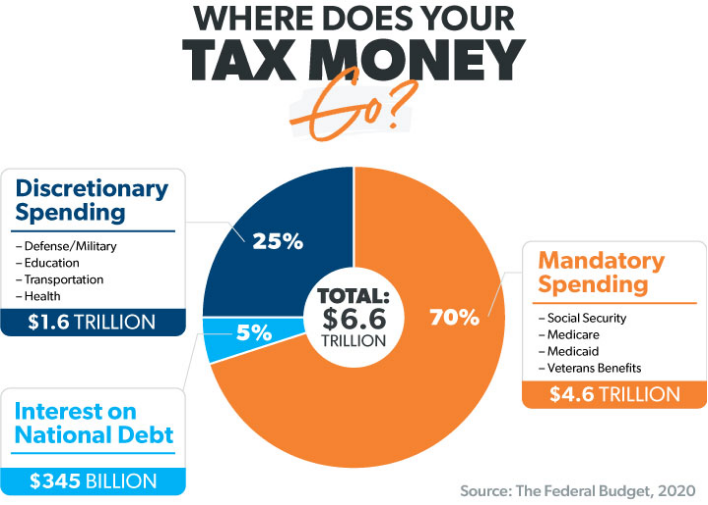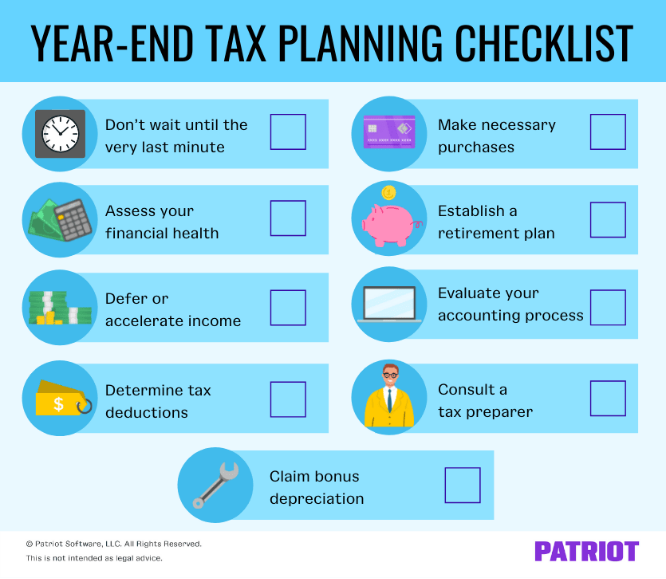الفصل الحادي عشر: التخطيط الضريبي والاستراتيجيات (CAD)
أهداف تعلم الدرس:
مقدمة: This section introduces essential tax planning strategies in Canada, focusing on taxpayer rights, understanding different types of taxes, and advanced tax planning techniques to optimize financial outcomes.
- Understand Taxpayer Rights and Responsibilities: Gain knowledge of the Taxpayer Bill of Rights and the responsibilities of Canadian taxpayers, ensuring fair treatment and awareness of entitlements.
- Comprehend Various Types of Taxes: Learn about different taxes applicable in Canada, including income tax, sales tax, property tax, و custom duties, and their implications on personal finances.
- Apply Advanced Tax Strategies: Explore strategic tax planning techniques, including timing income and deductions, investment tax optimization، و estate tax planning to enhance financial benefits.
A. Tax Basics
A1. Taxpayer Rights and Responsibilities
Canadian taxpayers have rights outlined in the Taxpayer Bill of Rights. For instance, you have the right to receive entitlements and to pay no more and no less than what is required by law. Example: If a taxpayer believes they’ve been overcharged, they can file an objection, which the Canada Revenue Agency (CRA) must address promptly and professionally.
A2. Understanding Taxes and Contributions

عنوان الشكل: أين تذهب أموال الضرائب الخاصة بك؟
مصدر: حلول رمزي
وصف: يشرح المقال من Ramsey Solutions تخصيص الضرائب الفيدرالية التي جمعتها مصلحة الضرائب الأمريكية، والتي بلغت حوالي $4.9 تريليون في عام 2022. ويوضح توزيع دولارات الضرائب عبر مختلف النفقات الحكومية، بما في ذلك الفوائد على الدين الحكومي، والإنفاق الإلزامي على الاستحقاقات. برامج مثل الضمان الاجتماعي، والرعاية الطبية، والمساعدات الطبية، وشؤون المحاربين القدامى، بالإضافة إلى الإنفاق التقديري الذي يغطي الدفاع الوطني، والنقل، والتعليم، والصحة، والمزيد.
الماخذ الرئيسية:
- يتم استخدام جزء من دولارات الضرائب للدفع الفوائد على الدين الوطني.
- الإنفاق الإلزامي يتضمن برامج استحقاق كبيرة مثل الضمان الاجتماعي، والرعاية الطبية، والمساعدات الطبية.
الإنفاق التقديري وتتضمن مخصصات الميزانية التي يناقشها الكونجرس سنويًا، بما في ذلك الدفاع والنقل والتعليم والصحة.
طلب: بالنسبة للأفراد الذين يتعلمون عن التمويل الشخصي، يوفر هذا التفصيل نظرة ثاقبة حول كيفية عمل الميزانية الحكومية وأهمية فهم أين يتم إنفاق أموال الضرائب. ويمكنها أن تفيد القرارات المتعلقة بالمشاركة السياسية والمسؤولية المالية. بالنسبة للمستثمرين، فإن معرفة مجالات الإنفاق الحكومي يمكن أن توجه استراتيجيات الاستثمار، حيث أن القطاعات التي تتلقى تمويلًا كبيرًا قد توفر فرصًا استثمارية. كما يساعد فهم هذه المخصصات دافعي الضرائب على رؤية تأثير مساهماتهم على الأولويات والخدمات الوطنية.
Different taxes apply to various aspects of life in Canada:
- Income Taxes: Earnings are taxed at federal and provincial levels. Example: A software developer in Ontario pays federal tax and a provincial tax.
- Sales Taxes: Goods and Services Tax (GST) is a federal tax, while the Harmonized Sales Tax (HST) combines GST with provincial sales tax in some provinces. Example: When purchasing a laptop in British Columbia, you pay 5% GST and an additional 7% PST.
- الضرائب العقارية: Homeowners pay property taxes based on assessed property value. Example: A homeowner in Vancouver pays property tax to the City, which funds local services.
- Custom Duties and Excise Taxes: Special taxes on certain imports like cars or alcohol. Example: Importing a car from the US might incur excise taxes if it doesn’t meet Canadian standards.
- Tariffs: Taxes on imported goods. Example: A business importing electronics from China pays tariffs calculated as a percentage of their value.
- Duties and Fees: Specific types of taxes on goods like tobacco or services like legal document processing. Example: Importing a vintage wine collection may attract a customs duty.
- CPP (Canada Pension Plan): A mandatory pension plan to which employees and employers contribute. Example: An employee earning CAD 55,000 annually might contribute CAD 2,544.30 to CPP.
- Health Services Taxes: Additional taxes in some provinces for health care funding. Example: In Ontario, a high-income earner pays a health premium with their taxes.
- Motor Vehicle Licenses: Annual fees for the licensing of vehicles, varying by province and vehicle type. Example: Renewing the license for a mid-sized car in Alberta may cost about CAD 93 annually.
Natural Gas Taxes: Levied on the consumption of natural gas. Example: A household in Quebec may see a tax on their monthly natural gas utility bill.
B. Income Tax Essentials
B1. Who Charges Income Tax
Both the federal government and your provincial/territorial government charge income tax, and you must file tax returns separately for each. Example: A teacher in Quebec files a federal return with the CRA and a provincial return with Revenu Québec.
B2. Types and Groups of Income
Income includes money from employment, businesses, and investments. Example: A freelance graphic designer reports income from client payments, interest from savings accounts, and dividends from Canadian stocks.
B3. Tax Brackets and Rates
Canada’s progressive tax system means higher earnings are taxed at higher rates. Example: A doctor earning CAD 250,000 pays a higher marginal tax rate on income above CAD 150,000.
- Average Federal Tax Rate: The percentage of income that goes to federal tax. Example: If a person earns CAD 100,000 and pays CAD 18,000 in tax, their average tax rate is 18%.
- Marginal Federal Tax Rate: The tax rate paid on the last dollar earned, often the highest rate. Example: If the same person earns an additional CAD 10,000, it may be taxed at 29%, which is their marginal rate.
Here’s an illustrative table showcasing hypothetical tax rates:
Income Range (CAD) | Tax Rate (%) |
0 – 48,535 | 15 |
48,536 – 97,069 | 20.5 |
97,070 – 150,473 | 26 |
150,474 – 214,368 | 29 |
Above 214,368 | 33 |
*Note: These numbers are illustrative and not based on current tax brackets.
B4. Provincial/Territorial Income Tax
Provincial/territorial taxes vary and can significantly affect your take-home pay. Example: An engineer might consider the lower personal income tax rate when deciding to move from Nova Scotia to Alberta.
C. Reducing Taxable Income
C1. Tax Deductions
You can lower your taxable income with deductions for RRSP contributions, childcare expenses, and more. Example: A parent may claim CAD 8,000 in childcare expenses, reducing their taxable income from CAD 70,000 to CAD 62,000.
C2. RRSP Contributions
Contributions to an RRSP reduce your current taxable income and grow tax-deferred until withdrawal. Example: A contribution of CAD 5,000 to an RRSP may save you approximately CAD 1,500 in taxes if you’re in a 30% tax bracket.
C3. Other Registered Savings Plans
- TFSA contributions are made with after-tax dollars, but earnings and withdrawals are tax-free. Example: If you invest CAD 5,000 in a TFSA and it grows to CAD 7,000, the CAD 2,000 gain is not taxed
- Clawback: Refers to the government reclaiming benefits if your income exceeds a certain threshold. Example: Old Age Security payments may be subject to clawback for high-income seniors.
- RESPs (Registered Education Savings Plans): Allow savings for education to grow tax-free until the beneficiary withdraws for educational purposes. Example: Parents contribute to an RESP for their child’s future tuition, and the investment grows without being taxed with a percentage contribution matched by government grants and bonds.
- RDSPs (Registered Disability Savings Plans): Long-term savings plans to help Canadians with disabilities and their families save for the future. Example: The family of a child with a disability invests in an RDSP to secure their financial future, with contributions matched by government grants and bonds.
.
C4. Tax Credits
Credits like the Disability Tax Credit or the Canada Child Benefit can directly reduce the tax payable. Example: A family with a child with a disability might receive a non-refundable credit that reduces their tax bill by CAD 2,500.
C5. Tax Refunds
If tax deductions and credits lower your taxes paid below what was withheld by employers, you’re due a refund. Example: An overpayment of CAD 2,000 in income tax due to excessive payroll deductions would result in a CAD 2,000 refund.
C6. Taxes in Everyday Life
Understanding taxation allows for informed decisions about spending, saving, and investing. Example: A consumer decides to buy a fuel-efficient car partly because of the eco-friendly rebate and the reduced fuel taxes compared to a gas-guzzling model.
D. Advanced Tax Strategies
D1. Strategic Tax Planning
Involves timing income and deductions for optimal tax outcomes. Example: A contractor defers invoicing for a big job to the next tax year when expecting to be in a lower tax bracket.
D2. Investment Tax
Understanding the tax implications of investments can optimize after-tax returns. Example: An investor chooses to hold dividend-paying stocks outside of a TFSA to take advantage of the dividend tax credit.
D3. Estate Tax Planning
Managing the tax implications of one’s estate can maximize the value passed to heirs. Example: An individual buys a life insurance policy to cover potential estate taxes, ensuring their heirs receive the intended inheritance without tax erosion.

عنوان الشكل: قائمة مراجعة التخطيط الضريبي لنهاية العام
مصدر: برامج باتريوت
وصف:
توفر الصورة قائمة مرجعية للتخطيط الضريبي في نهاية العام:
- لا تنتظر حتى اللحظة الأخيرة: ابدأ التخطيط الضريبي قبل نهاية العام بوقت طويل.
- تقييم صحتك المالية: قم بمراجعة بياناتك المالية وفهم وضعك المالي.
- تأجيل أو تسريع الدخل: اعتمادًا على وضعك الضريبي، فكر في تأجيل الدخل أو تسريعه.
- تحديد التخفيضات الضريبية: حدد جميع التخفيضات الضريبية المحتملة التي يمكنك المطالبة بها.
- المطالبة بإهلاك المكافأة: إن أمكن، قم بالمطالبة بإهلاك المكافأة على إقرارك الضريبي.
- إجراء عمليات الشراء الضرورية: قم بإجراء أي عمليات شراء تجارية ضرورية قبل نهاية العام للمطالبة بالخصومات.
- وضع خطة التقاعد: قم بإعداد خطة تقاعد للادخار للمستقبل والتمتع بالمزايا الضريبية.
- تقييم العملية المحاسبية الخاصة بك: تأكد من أن عملية المحاسبة الخاصة بك فعالة ودقيقة.
استشر مُعد الضرائب: اطلب المشورة المهنية للتأكد من تحقيق أقصى قدر من المدخرات الضريبية الخاصة بك.
الماخذ الرئيسية:
- يعد التخطيط المبكر وتقييم الصحة المالية أمرًا بالغ الأهمية للتخطيط الضريبي الفعال.
- يمكن أن يساعد تحديد التخفيضات الضريبية وإجراء المشتريات اللازمة في تقليل الالتزام الضريبي.
- استشارة مُعد الضرائب وتقييم العملية المحاسبية تضمن تقديم إقرارات ضريبية دقيقة.
طلب: توفر قائمة المراجعة هذه نهجًا منظمًا لأصحاب الأعمال الصغيرة للتخطيط لضرائب نهاية العام. من خلال اتباع هذه الخطوات، يمكن لأصحاب الأعمال الاستعداد بشكل أفضل للموسم الضريبي، وضمان تقديم إقرارات ضريبية دقيقة، وربما تقليل التزاماتهم الضريبية. إنه دليل مفيد لضمان مراعاة جميع الجوانب المهمة للتخطيط الضريبي ومعالجتها قبل نهاية العام.
معلومات الدرس الرئيسية:
كلمة الختام: Mastering tax planning and understanding various tax types and strategies are vital for financial optimization and compliance. This section equips you with the knowledge to navigate the Canadian tax system effectively and make informed financial decisions.
- Taxpayer Rights and Responsibilities: فهم Taxpayer Bill of Rights, ensuring fair treatment and awareness of entitlements.
- Types of Taxes in Canada: تعلم حول income tax, sales tax, property tax, و custom duties, and their implications on personal finances.
- Income Tax Essentials: Comprehend how both federal and provincial/territorial governments charge income tax, and understand Canada’s progressive tax system with specific tax brackets و معدلات.
- Advanced Tax Strategies: Apply strategic tax planning techniques, including timing income and deductions, investment tax optimization، و estate tax planning.

